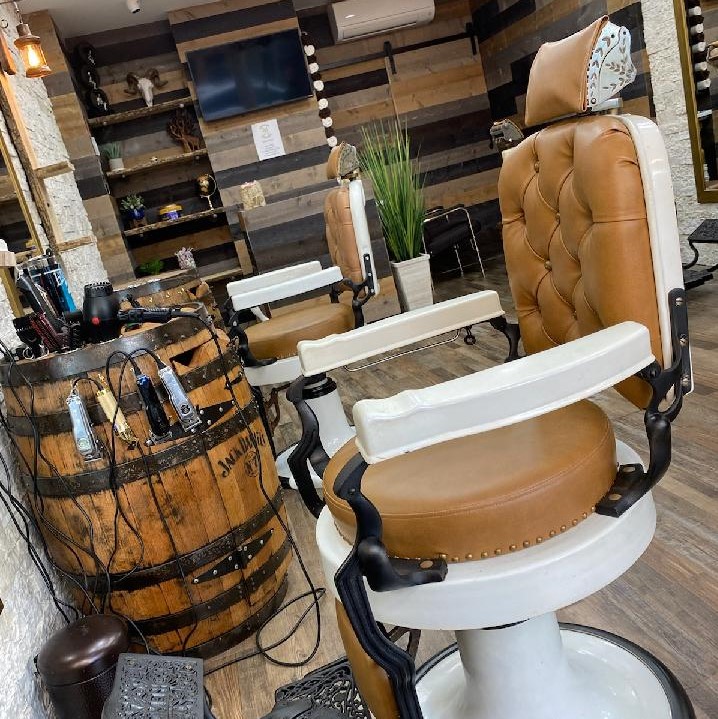Frequently Asked Questions
Texturizing shears and thinning shears serve distinct purposes in hairstyling, each contributing uniquely to a natural look. Texturizing shears, often featuring wider teeth and more pronounced gaps, are designed to remove bulk and add movement, creating a layered effect that enhances volume and dimension. They are ideal for crafting soft, feathered edges and blending layers seamlessly, which is particularly beneficial for achieving a tousled, effortless appearance. In contrast, thinning shears, characterized by their finer teeth, are primarily used to reduce density and manage thick hair by removing excess weight. This results in a smoother, more controlled finish, preventing the hair from appearing too heavy or bulky. While both tools can be used to soften lines and integrate layers, texturizing shears are more adept at creating dynamic, textured styles, whereas thinning shears excel in refining and polishing the overall silhouette, ensuring a balanced and natural look.
Texturizing shears can be expertly utilized to add volume without compromising structure by employing techniques such as point cutting, slide cutting, and channel cutting. Point cutting involves using the tips of the shears to snip into the hair ends, creating soft layers that enhance movement and lift. Slide cutting, on the other hand, involves gliding the shears along the hair shaft to remove bulk while maintaining length, which is ideal for adding subtle volume to fine hair. Channel cutting, a more advanced technique, involves cutting parallel to the hair's natural fall, creating internal layers that boost volume and texture without disrupting the overall silhouette. These methods, when executed with precision, allow for the creation of airy, voluminous styles that maintain their foundational integrity, making them suitable for various hair types and lengths.
Texturizing shears, also known as thinning shears, are essential tools in achieving a seamless blend between layers in a haircut. These specialized scissors feature notched blades that remove a portion of the hair, creating a softer, more natural transition between different lengths. By selectively thinning out sections, they reduce bulk and add movement, which is particularly beneficial for thick or coarse hair types. The shears can be used to feather the ends, soften harsh lines, and eliminate weight lines, resulting in a more fluid and cohesive hairstyle. Hair stylists often employ texturizing shears to enhance volume, create dimension, and ensure that layers flow harmoniously, avoiding the choppy or disconnected appearance that can occur with traditional cutting techniques. The strategic use of these shears can also help in managing cowlicks and ensuring that the hair lays flatter against the scalp, contributing to an overall polished and professional finish.
When using texturizing shears on curly hair, it is essential to maintain the natural curl pattern and avoid disrupting the hair's inherent bounce and volume. Stylists should begin by assessing the curl type, whether it's wavy, coily, or kinky, to determine the appropriate technique. It's crucial to work with dry hair to better visualize the curl pattern and avoid over-texturizing, which can lead to frizz and uneven layers. The shears should be used sparingly, focusing on the mid-lengths and ends to remove bulk without compromising the curl's integrity. Cutting at an angle and using a point-cutting technique can help blend layers seamlessly, ensuring the curls retain their shape and movement. Additionally, it's important to consider the hair's porosity and elasticity, as these factors influence how the curls will respond to texturizing. By prioritizing the hair's natural texture and using a gentle approach, stylists can enhance the curls' definition and create a balanced, voluminous look.
Texturizing shears should be used sparingly, typically every 6 to 8 weeks, to maintain a structured yet natural hairstyle. This frequency allows for the removal of bulk and the creation of movement without compromising the integrity of the hair. Overuse of texturizing shears can lead to thinning and uneven layers, so it's crucial to assess the hair's density and texture before each use. Hair professionals often consider factors such as hair type, length, and desired style when determining the appropriate frequency for texturizing. By strategically using these shears, stylists can enhance volume, add dimension, and create a seamless blend between layers, ensuring the hairstyle remains fresh and dynamic.

